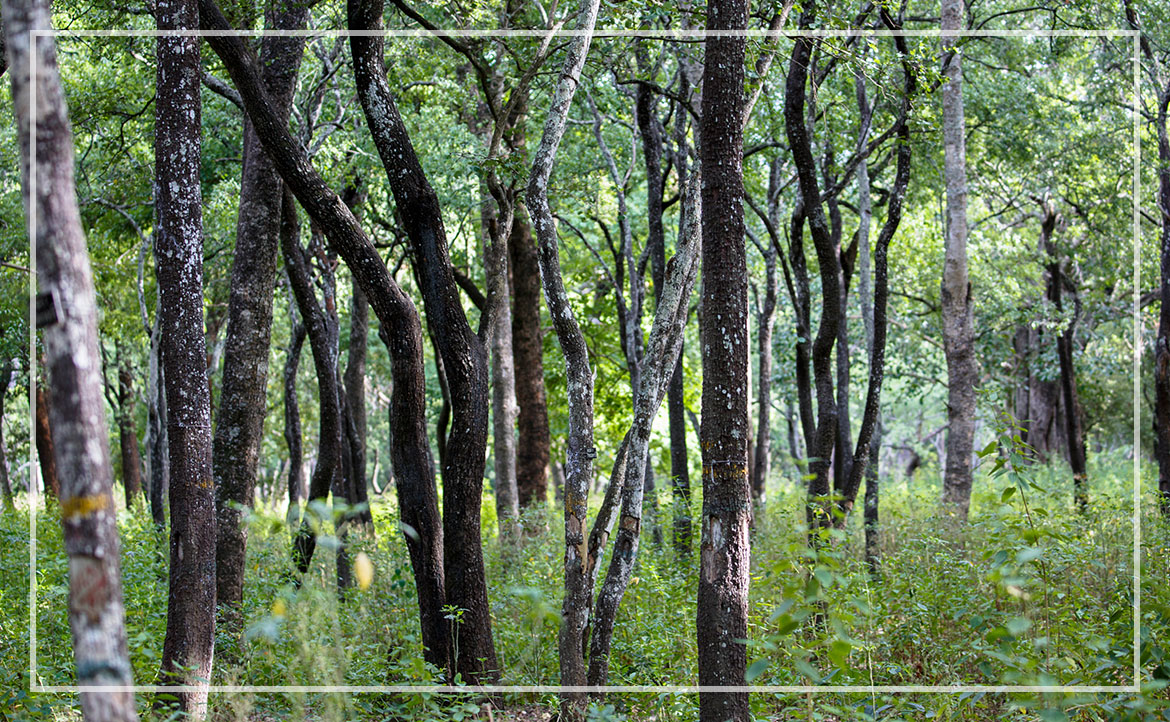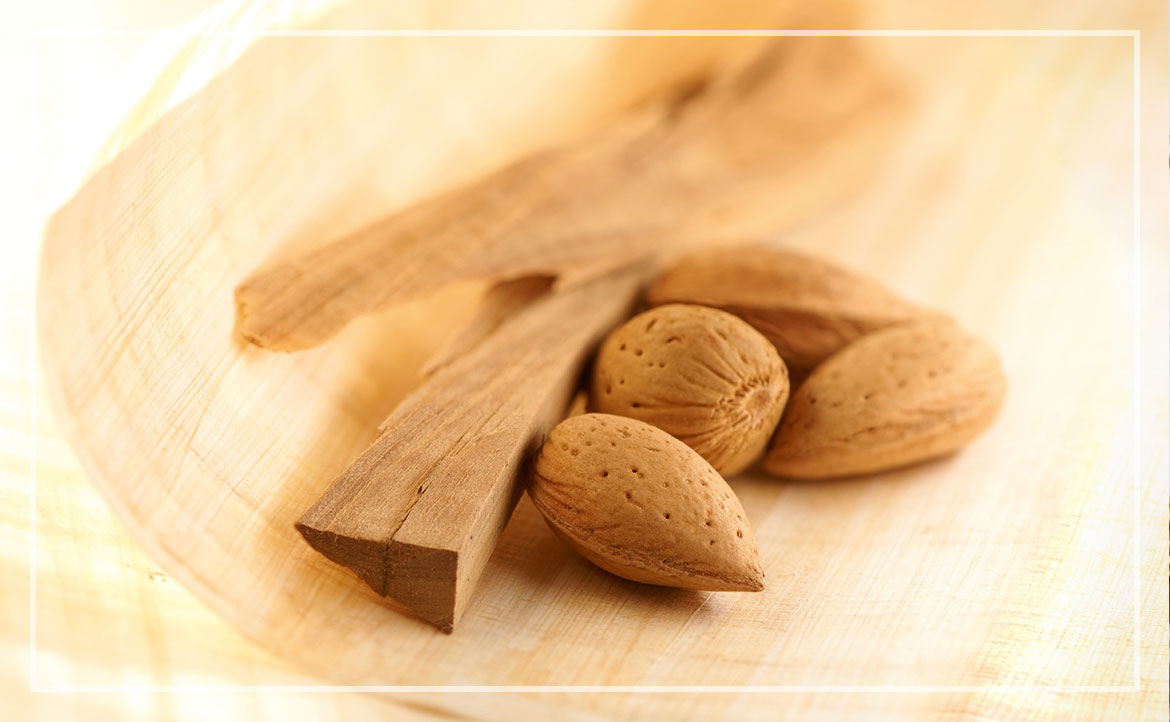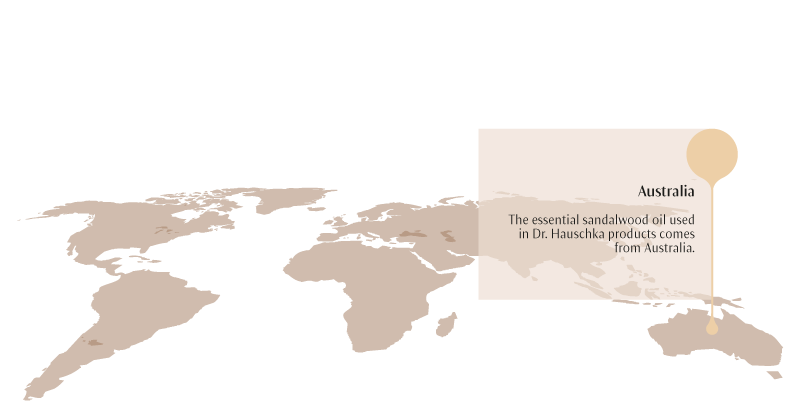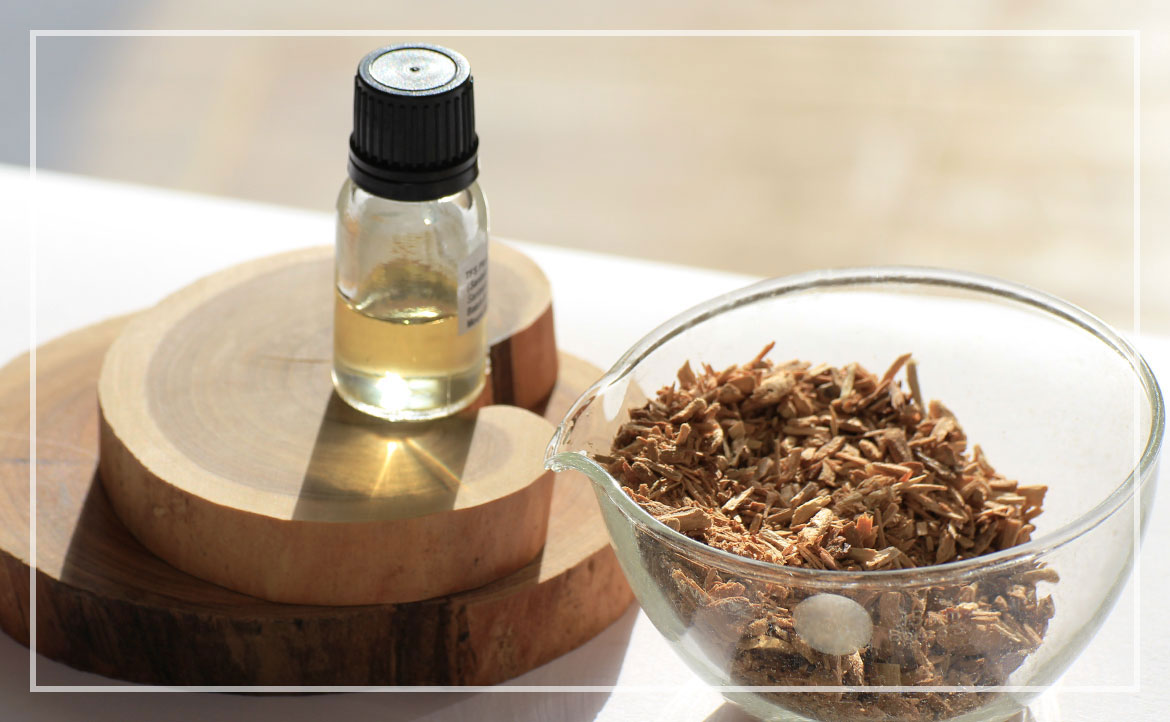Raw material profile
Most people know sandalwood from India. No-one who has travelled to this colourful country will ever forget its characteristic scent. It permeates rooms and lingers on clothing. The fragrance comes from certain sandal trees, of which there are about 25 species worldwide. These are natively found in the Indian subcontinent, Australia, from Hawaii to New Guinea and in the Philippines, and have certain things in common: their wood contains essential oils and they are classed as semi-parasites. The trees obtain some of their nourishment from the root systems of neighbouring plants, but can also survive alone, without a host plant. A whole range of different plants can serve them as host, for example tall grasses such as Kans grass (Saccharum spontanum), palms and plants of the Araliaceae family. On contact with the roots of the host plant, the root tips of the sandalwood saplings form organs called haustoriums, which penetrate the roots of the host. As this grows, nodules up to two centimetres in size are formed which allow the sandalwood tree to take over the host roots. The sandalwood tree draws so much nourishment from the host plant that the latter struggles to grow.
Essential sandalwood oil is obtained from sandal trees from India and Australia. These grow to heights of between one and ten metres, are evergreen, flower throughout the year and are not fussy about where they grow – whether in fertile valleys or on dry mountainsides, the sandal tree thrives anywhere. Indeed, the scent of its wood seems to be more intense the dryer and poorer the soil it grows in. Its leaves are large and leathery, somewhat like laurel leaves. Its unscented flowers usually have four petals, which look yellow on opening but gradually take on a deep red colour. They grow in clusters at the tips of the branches.
The essential sandalwood oil obtained from the reddish heartwood contains a number of substances including the sesquiterpene alcohol santalol and santalen, which is classed as a sesquiterpene. It is antiseptic, toning and stimulates the lymph flow. The essential oil plays an important role in the perfume industry. Sandalwood chippings furthermore supplement chewing tobacco and are suitable for smoking on charcoal. Incense sticks can also be made from the ground wood. For this, wood meal is mixed with a binding agent, for example gum arabic, and charcoal, then rolled into sticks and dried. The sandalwood water additionally generated during steam distillation is used to give a masculine note to aftershave, for instance.


















